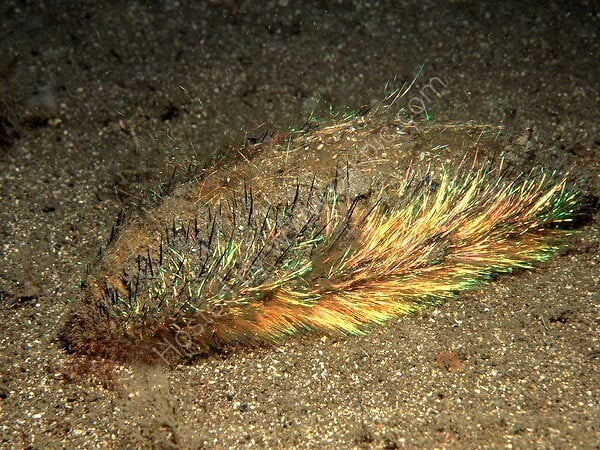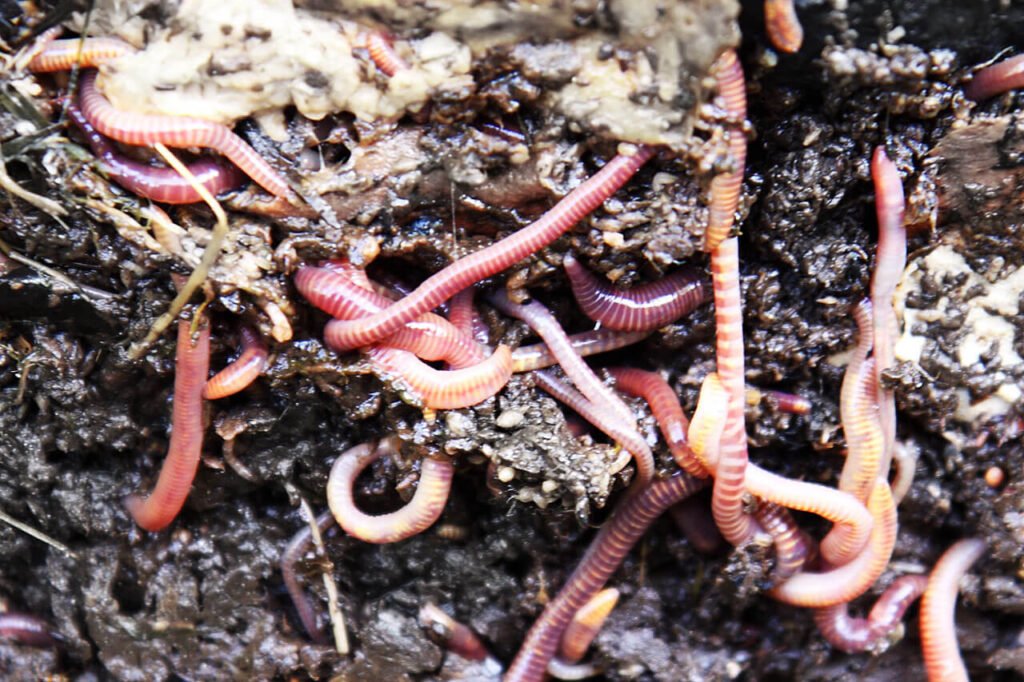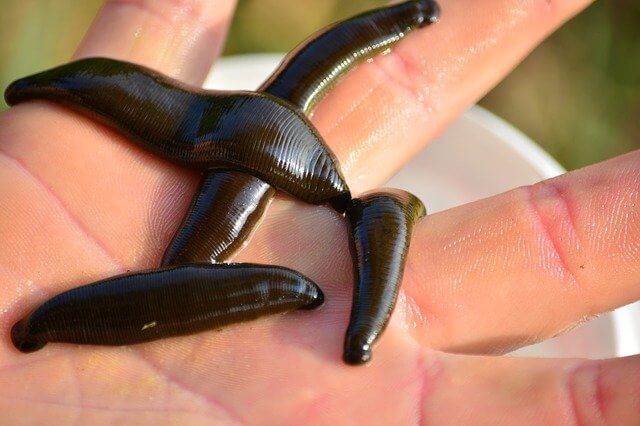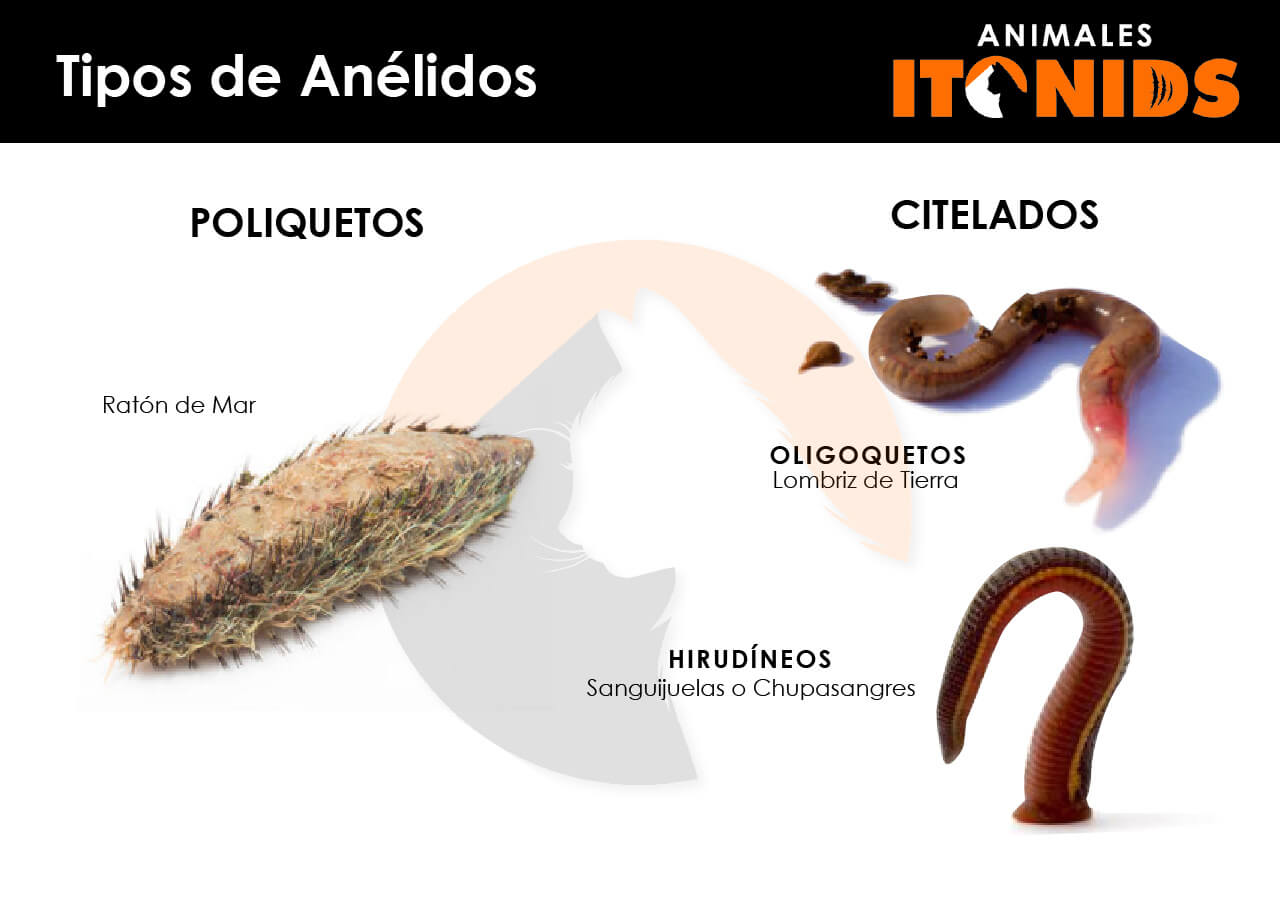If you have ever turned over the soil in a garden out of curiosity, or while planting something, you surely encountered an earthworm… one of the most popular animals in the group called Annelids (or Annelida), which includes more than 15,000 known species.
With various shapes, sizes, and colors, annelids share one quality: their bodies are divided into segments or rings of similar size, which repeat along their length.
Their name comes from the Latin ‘annellum’ (meaning ‘ring’) and the Greek ‘ides’ (‘member of a group’), and they can be found in both terrestrial and aquatic environments. As they are vermiform animals (worm-shaped), they are also known as ‘segmented worms’.
Do you want to learn about the most amazing characteristics, classification, structure, and some curious facts about this fantastic group of animals? It’s time to learn a little more about Annelids.
What are Annelids?
Belonging to the Animal Kingdom, Phylum Annelida, and distributed into two classes (Polychaeta and Clitellata), they are invertebrate animals (without a spinal column), worm-shaped with a soft body, usually long, cylindrical, and divided into segments (rings).
It is a very diverse group, and its characteristic specimens include the earthworm, the leech, and marine worms (older and less known species).
What are their characteristics?
Externally
They have no skeleton.
Their body is structured in segments or rings (called metameres), repeating one after the other, formed by three regions: head, trunk, and posterior zone (only the trunk is divided into rings).
In the head (or prostomium) are the brain, mouth, and sensory organs; in more evolved species, the head may be joined to the trunk, forming a composite head. In the posterior area (or pygidium) is the anus.
The trunk is covered by a very soft layer or skin, formed by cells that produce a lubricating fluid (similar to thin mucus) that keeps one ring separate from another, and by a circular muscle layer, which allows movement.
The body shape can be cylindrical or flattened, and they can display unique forms and bright colors.
They have bilateral symmetry, meaning one half of the body is identical to the other.
Most have eyes and light-sensitive cells on their skin, as well as organs for balance (statocysts).
They may have bristles on their skin (except leeches), also known as setae or chaetae, which help them move; in other cases, these movable hairs protrude from a small bump (parapodium).
Their size can range from less than 1 millimeter to 1.5 meters in length. However, a 3-meter-long marine species has been discovered (known as the Bobbit) capable of injecting a toxin to kill or stun its prey!
Certain annelids cause diseases, with some (like the leech) being parasites of mammals.

Internally
In the center of the body, they have a complete and straight digestive tube (not divided).
The internal organs (intestine, esophagus…) float in a liquid called coelom, which fills the space between the digestive tube and the external body.
The circulatory system is closed (formed by blood vessels) that carry blood (which can be red or green) throughout the body.
The nervous system is simple; the brain connects to a main nerve cord that runs the entire length of the body and links to each ring or division.
Some species (earthworm) eliminate urine through small tubes (nephridia), located in almost all the body rings, connecting to the skin pores; others expel waste together (urine and feces) through the intestine, until reaching the anus.
Aquatic annelids excrete ammonia (a colorless gas) while terrestrial ones transform it into urea (a crystalline compound), very useful as fertilizer. The earthworm expels what it ingests every 45 seconds!
Most breathe through their skin (cutaneous respiration), so it is necessary to keep it moist to exchange gases through the body wall; others (marine worms) have gills and capture oxygen from the water.
Did you know…? The earthworm can have ten hearts in its body, distributed in pairs. Although they are called aortic arches (instead of hearts), they are responsible for distributing blood throughout its body.
Types of Annelids

They are divided into two main groups:
Polychaetes (Polychaeta)
This is the most primitive group (marine worms), with about 90 families and characterized by having two extensions (parapodia) useful for their movement.
Examples of these annelids: sea mice, feather dusters, serpulid tube worms, lugworms…

Clitellates (Clitellata)
Characterized by having a collar or ring structure (clitellum), and subdivided into:
Oligochaetes (Oligochaeta)
Its characteristic specimen, the earthworm, can be terrestrial or marine and are named so for having few setae (movable hairs).

Hirudinea (Leeches)
Such as leeches or bloodsuckers; they mostly inhabit fresh waters and have suckers (ends by which they attach or suck) with three rows of 100 teeth each!

Where do Annelids live?
They exist in all types of environments, whether terrestrial (humid) or aquatic (both marine and freshwater), except in Madagascar and Antarctica. They live freely, inside tubes, cavities in the earth, or fixed, attached to rocks, the seafloor, or an animal.
What do Annelids eat?
Their dietary habits are very varied and associated with each species:
- Polychaetes (marine worms) consume plants, plankton, marine debris, small crustaceans, and other annelids.
- Oligochaetes (earthworms) consume organic detritus, fruits, vegetables.
- Hirudinea (leeches) feed mainly on blood, as well as worms, snails, and insects.
How do they reproduce?
Most Annelids are hermaphrodites (individuals with both male and female reproductive organs), and others (marine worms) have separate sexes.
Despite having both organs, they need a partner to reproduce, either sexually, by direct transfer of sperm from one body to another, and by external fertilization (outside the mother’s body); or asexually (by budding and fission).
By budding, the new organism grows directly on the adult’s body until it detaches from it; by fission (breaking), the individual fragments into two or more parts, giving life to new organisms.
Once fertilized, terrestrial annelids lay their eggs in the soil, while aquatic ones use plants or soil substrate

